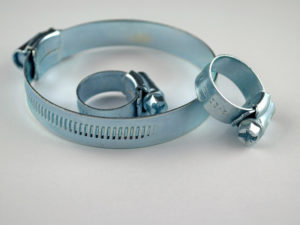 It’s always a good idea to call a repair service should any major problem develop with your pipes, heating system, or plumbing. But when it comes to small problems here and there around the house, there’s a surprising amount you can fix yourself.
It’s always a good idea to call a repair service should any major problem develop with your pipes, heating system, or plumbing. But when it comes to small problems here and there around the house, there’s a surprising amount you can fix yourself.
A DIY project to fix a minor problem before it can become a major issue can not only help keep your money in your pocket, but it can also help sharpen your home improvement skills. That being said, consider making a DIY project out of the following problems the next time they come up around the house.
Leaking pipes
Unless your pipes are gushing water, there’s no need to call a repair service for a tiny leak right away, especially if the maintenance isn’t in your budget right now. For a temporary fix to minimize the damage while you wait to call up a plumber, you can slow down the leak for now.
Begin by turning off your water supply and draining the pipe. Once this has been done, clean around the leak and acquire some garden hose. Cut a small amount of the hose to cover the hole in the pipe with a few inches available at each end. With the garden hose over the hole, secure the hose there with premium hose clamps.
Premium hose clamps should be able to work for this project regardless of the size of the pipe since there are a wide range of hose clamp sizes to meet any fastening need for any type of hose. However, if your pipe is larger it may be recommended that you use large stainless steel hose clamps to ensure the size meets your needs.
Sweating basement pipes
A leak in the basement can cause a surprising amount of damage, which is why it’s important to tend to sweating basement pipes as soon as possible to prevent mold and water damage.
To stop cold water condensation from making your pipes sweat, begin by cutting foam pipe insulation to the size needed. Cover the exposed pipe available.
Your pipes make a banging sound after the toilet flushes
Also known as water hammer, this banging sound is often the result of high water pressure. To fix this problem before it can cause damage to your system, begin by located the pressure regulator on the waterline. Turn down the water pressure on the waterline anywhere between 40 to 50 psi by turning the screw.
Minor problems around the house can be easily fixed, or temporarily fixed, with a little elbow grease and the right premium hose clamps. The next time a small problem pops up around your pipes or the rest of the house, consider whether you can DIY it before calling a service. You may be surprised what heavy duty hose clamps can do.

